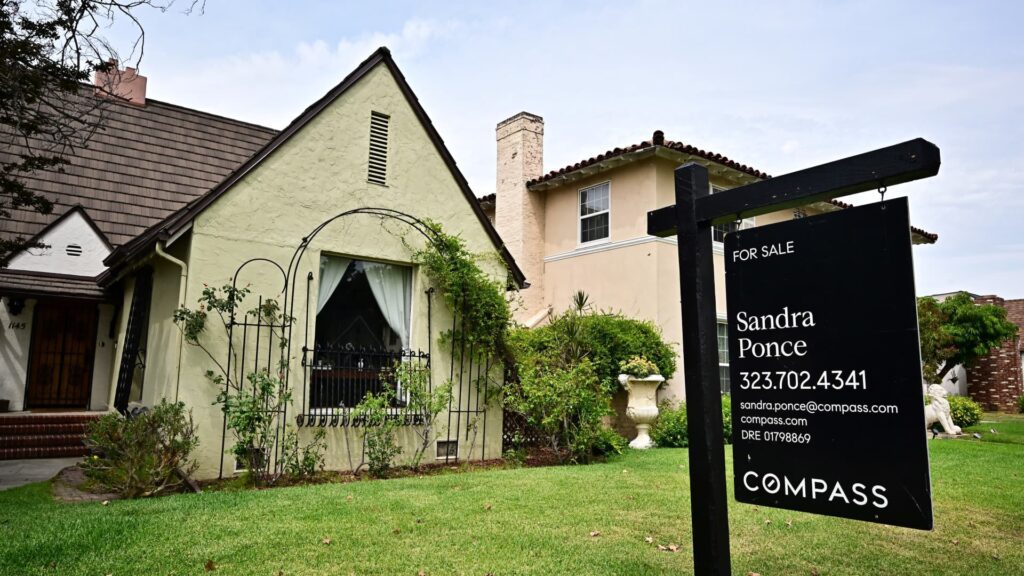The Fed’s decision on Wednesday, along with expectations that the Fed could cut rates again before the end of the year, could put further downward pressure on mortgage rates and finally offer some relief to would-be homebuyers.
According to the Mortgage Bankers Association, 30-year fixed-rate mortgages fell to 6.3% in the week ending Oct. 24.
Mortgage rates are currently at their lowest levels since September 2024, but the average rate on a 30-year fixed-rate mortgage is still significantly higher than the sub-3% levels early in the pandemic.
In addition to these relatively high mortgage rates, soaring home prices and economic uncertainty are causing many potential buyers to think twice.
However, adjustable-rate mortgages (ARMs) offer even lower initial interest rates than fixed-rate loans. With these mortgages, the initial interest rate is fixed for a specified period of time (often five, seven, or 10 years) before it adjusts based on changes in interest rates.
According to MBA data from earlier this month, ARM interest rates are now nearly 1 percentage point lower than 30-year fixed rates.
According to MBA, the average interest rate for a 5/1 ARM is 5.66%.
Brad Hall, principal and head of fixed income at Ferguson Wellman Capital Management in Portland, Ore., ranked No. 12 on CNBC’s 2025 Financial Advisors 100, says ARMs may be an “undervalued opportunity” right now.
Adjustable-rate mortgages are making a comeback because they are cheaper in the short term, experts say. According to MBA, ARMs accounted for about 10% of all mortgage applications in September, the highest share in nearly two years.
“This trend has been fairly consistent and is largely due to arm rates being significantly lower than fixed rates,” said Joel Kang, vice president and deputy chief economist at MBA.
“Assuming a $400,000 loan, your monthly payments will be about $200 lower. That’s a big reason why ARMs in general are becoming more popular,” Kang said.
A “For Sale” sign is posted next to a property for sale in Alhambra, California on August 28, 2025.
Frederick J. Brown | AFP | Getty Images
However, ARMs are still not as popular as they were during the subprime mortgage crisis of the mid-2000s, when the ARM share reached 35%, but relaxed credit standards at the time created problems for many borrowers.
“ARM has certainly gotten a bad reputation due to the financial crisis,” Hall said.
But a lot has changed since then. These days, “ARM borrowers tend to have higher credit scores because they are underwritten much more rigorously,” said Kang, the MBA.
This means that ARMs can be difficult to qualify for and are often reserved for larger loan amounts.
Some risks remain with ARM
“For potential homebuyers who are on the sidelines, this is a good way to finance their purchase,” Hall said, especially if long-term interest rates continue to fall. Adjustable rate mortgages are pegged to the prime rate, but the 10-year Treasury bond influences the long-term outlook.
Some risks remain. Over a period of time, the ARM rate adjusts to reflect current market conditions. If interest rates rise, borrowers may end up paying significantly higher interest rates than they would with a fixed-rate loan, potentially resulting in higher monthly mortgage payments.
Kang said the problem arises “when there is a payment adjustment and the borrower does not have the ability to accommodate the payment change.”
As such, ARMs may make sense for buyers who plan to move to a fixed-rate loan or refinance before the initial rate period ends.
Whether this is the right option often depends on your time horizon, Kang said.
Subscribe to CNBC on YouTube.


